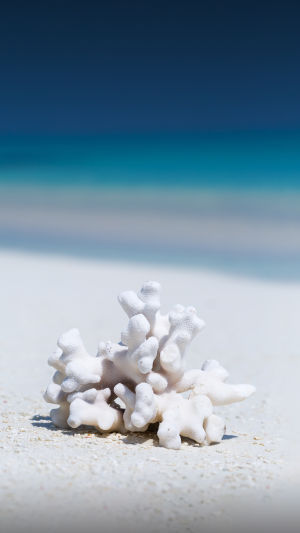Coral, commonly known as sea stone flower, is the calcareous substance secreted by submarine coral polyps, accumulated over time
The main ingredients of coral are carbon and calcium, and it is opaque, with colours ranging from red, white, and occasionally black, with a hardness of Mohs 3.5 and being brittle. Found in the depths of tropical and subtropical oceans, coral has grown only about 3 centimetres in the past 100 years. Its texture is tight, delicate, shiny, and smooth.
Red coral is rare and expensive, as the coral itself has no colour; the different colours are related to the insect-yellow algae in its body. Coral is equivalent to an ecosystem, made up of coral polyps and polyps. Different corals choose different types of xanthophylls, which are rich in colour, thus resulting in the different colours of the two. The colour of coral is actually the colour of xanthophyll, such as brown, yellowish green, and so on.
Corals come in many colours, but the most common ones are white. These are generally referred to as white corals and include white corals in coral reef species (belonging to coral reefs) and white corals in red coral species (belonging to gem corals).
White coral generally refers to white coral fossils, which are also called coral jade. Like red coral, it is mainly composed of calcium carbonate. Of course, some people think that the so-called white coral is actually a white sea stone flower, which is a calcareous substance secreted by submarine coral polyps and accumulated over time.
If the coral does not have Xanthophyta, it will appear white. Xanthophyta not only provides oxygen and nutrients to corals but also is closely related to the formation of calcareous bones of corals.
At the same time, chlorophyll and other photosynthetic pigments contained in insect yellow algae are the main sources of the colour of most corals. However, with the intensification of global warming and environmental pollution, warmer sea water, acidified environment and serious pollution
The fragile symbiotic relationship between xanthophyta and coral polyps has been severely tested. If the temperature is slightly higher than the normal range, photosynthesis and the ability to provide animal nutrients will be affected.
If the coral is disturbed, it will expel insect yellow algae and turn white. The departure of the algae has overshadowed the originally gorgeous coral reef, a phenomenon known as coral bleaching.
However, coral bleaching does not mean death, they can still survive for some time after the loss of algae, if the environment recovers, there is still a chance to reabsorb the algae and restore their health.
More than 90 per cent of coral reefs in the regions on the World Heritage list were affected by major albino events in 1998,2002, 2016 and 2017. Climate change has led to a rapid increase in the frequency and scale of coral bleaching in recent years.
Large-scale bleaching was first discovered on the Great Barrier Reef in 1998, and the study found that coral bleaching is now about five times as frequent, from once every 27 years in the early 1980s to once every six years now.
It takes about 10 to 15 years for coral reefs to recover from bleaching, which means that the current frequency of bleaching is likely to exceed the capacity of coral reefs.





